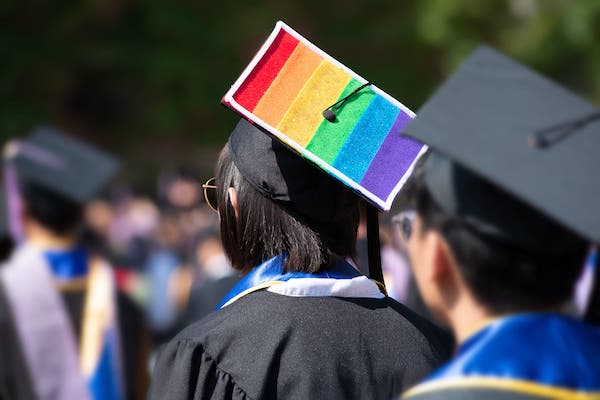What’s LGBTQ mean, anyway? For that matter, what’s LGBTQIA+? And why is it important in higher education?
In this blog, we’ll break down the meaning of LGBTQ (and LGBTQIA+ and beyond!) so you can help support this group of students during Pride Month and all year!
Why Supporting LGBTQ Students in Higher Education Is More Important than Ever
With the pandemic, LGBTQ students faced special concerns, including increased risk for homelessness and mental health issues.
That’s why it’s important to know the 411 on LGBTQ’s meaning, which is the first step in supporting this group.
“Many gay, lesbian, and transgender students say they face an array of challenges and safety issues on their campuses. The Chronicle interviewed more than a dozen of them to hear more about what keeps them from thriving in college.”
Let’s start with the ABCs of LGBTQ+:
What’s LGBTQ? But First, the Basics!
Before we break down the LGBTQ acronym, it’s helpful to understand some of these basic terms first:
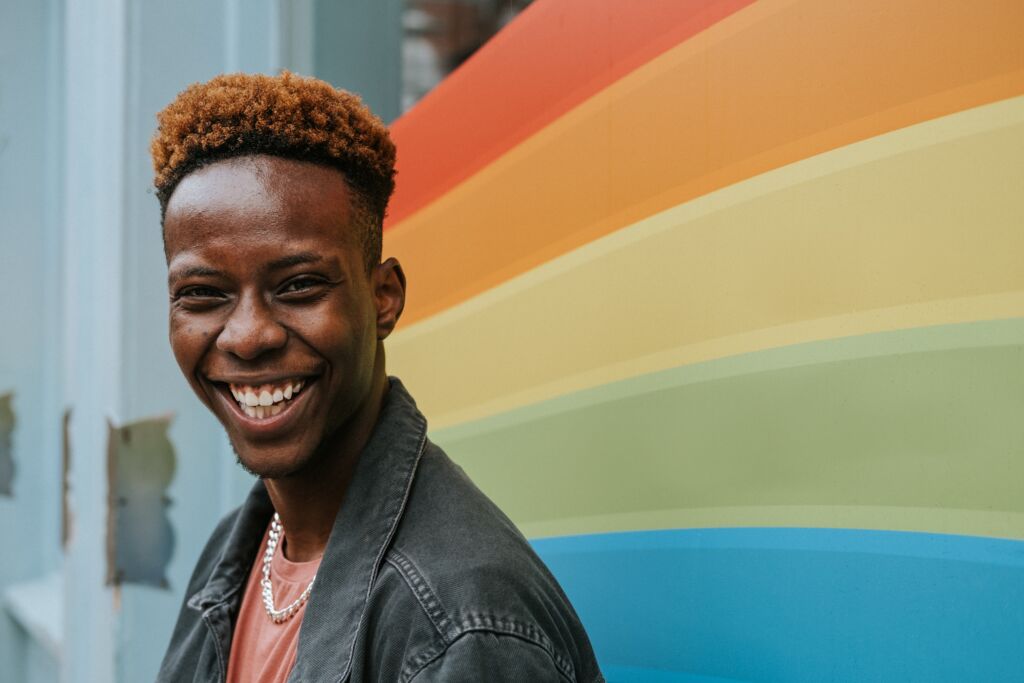
Sexual Orientation
According to the Human Rights Campaign, sexual orientation is “an inherent or immutable enduring emotional, romantic, or sexual attraction to other people.” They also note that “an individual’s sexual orientation is independent of their gender identity.”
In other words, sexual orientation refers to the gender(s) someone is attracted to, regardless of that person’s gender identity. This brings us to our next term …
Gender Identity
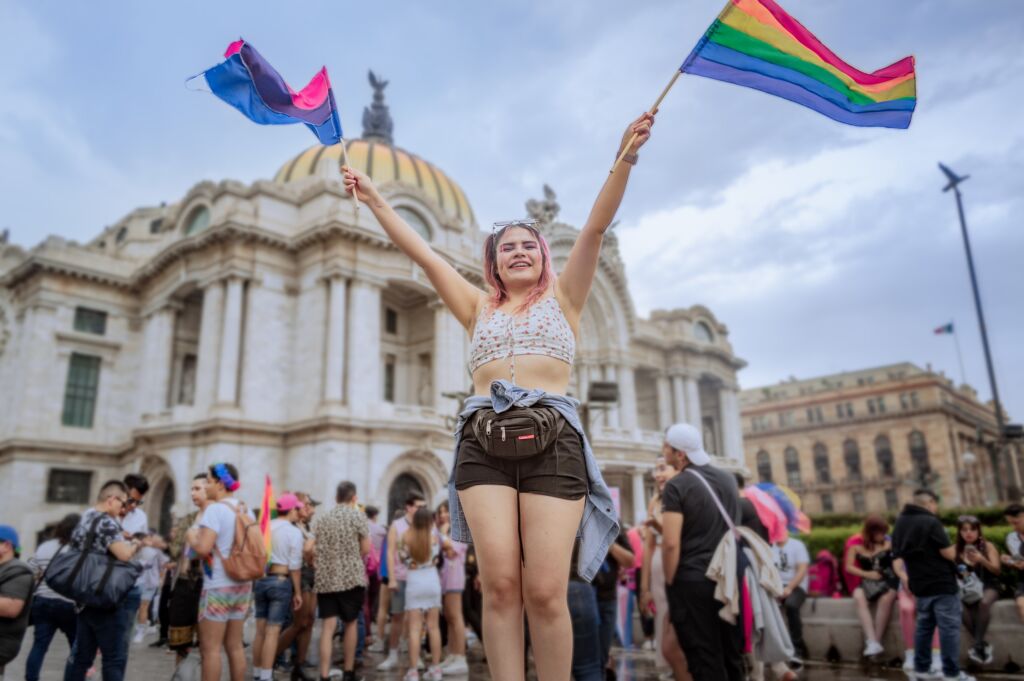
Gender identity refers to a person’s sense of their own gender. This sense may or may not correspond with the sex they were assigned at birth. It is important for those working in higher education to understand and support gender identity diversity to create inclusive and safe environments.
“Gender refers to internal and social identity and often corresponds with but is not synonymous with sex. Experts from organizations including the American Medical Association, American Psychiatric Association and American Psychological Association say gender is a spectrum, not a binary structure consisting of only males and females.
“Sex refers to biological characteristics, such as chromosomes, hormones and reproductive anatomy.
“Since not all people fall under one of two categories for sex or gender — as in the cases of nonbinary and intersex people — avoid references to both, either or opposite sexes or genders.”
—AP Style Guide’s Transgender Coverage Topical Guide
The Gender Binary
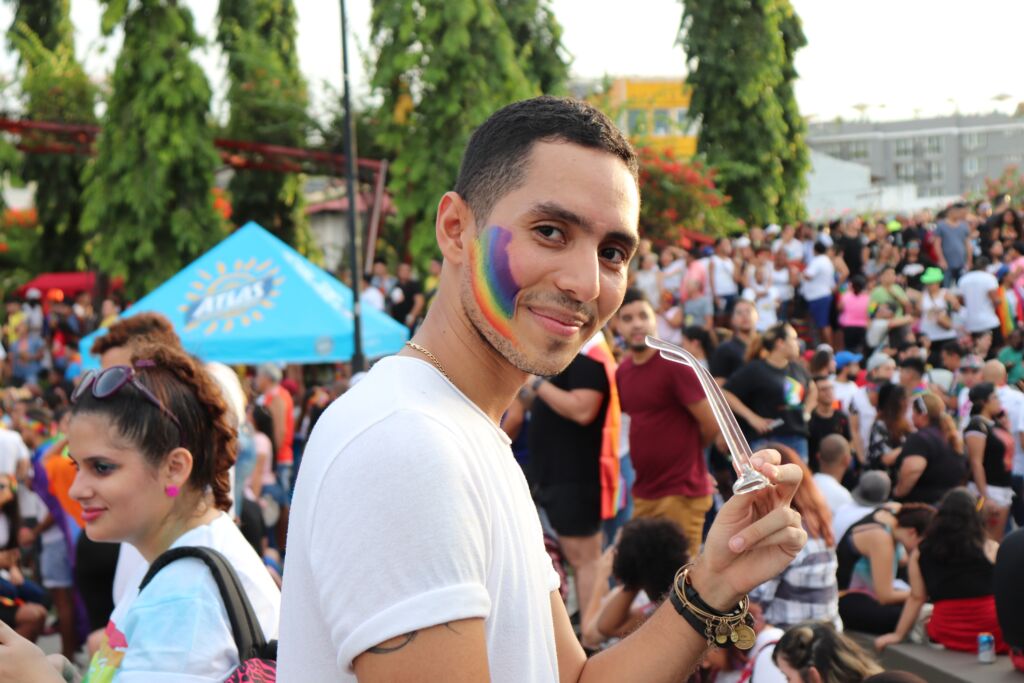
The gender binary categorizes individuals into two distinct, mutually exclusive genders: male and female. However, this traditional term fails to acknowledge and include the diverse gender identities beyond these two categories. For example, someone who is nonbinary might exist between or beyond the man-woman binary.
According to the LGBT Foundation, “The word ‘binary’ comes from a Latin word meaning ‘consisting of two.’ When we refer to ‘gender binary,’ we are referring to the two common categories for gender, man and woman.
“These categories are sometimes too narrow to fit everyone.”
And now, on to the big acronym!
What’s LGBTQ #1: L Is for Lesbian
Lesbian refers to a woman who is attracted to other women. According to the LGBTQ+ advocacy group PFLAG, “People who are lesbians need not have had any sexual experience: Attraction and self-identification determines orientation, not the gender or sexual orientation of one’s partner.”
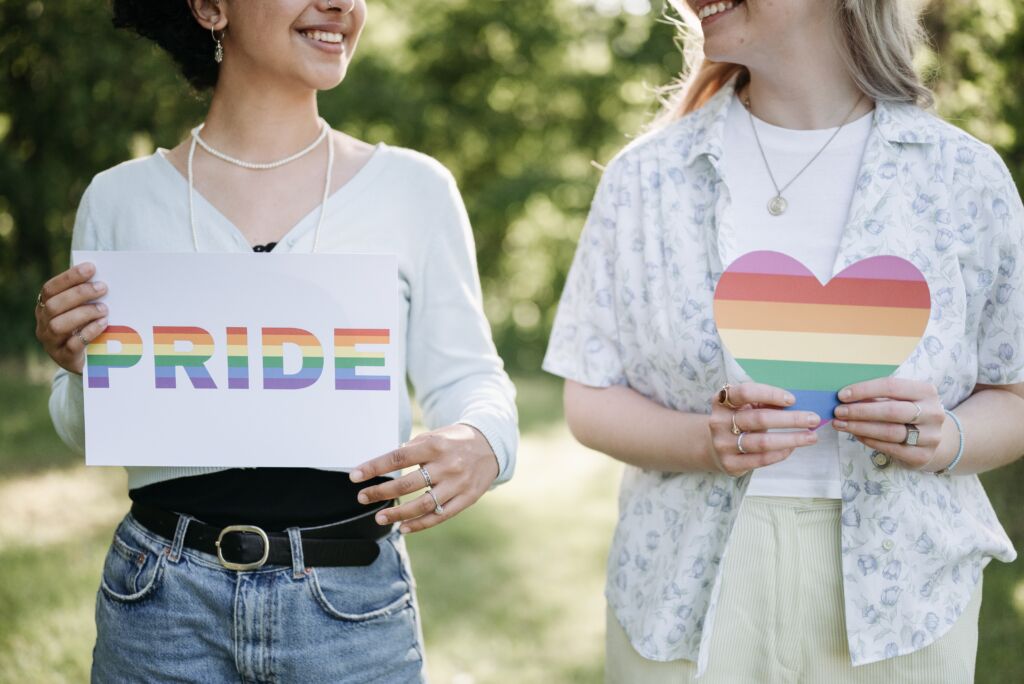
The term “lesbian” is specifically used for women, and it’s one of the many sexual orientations that exist within the LGBTQ+ community.
What’s LGBTQ #2: B Is for Bisexual
Being bisexual is a part of someone’s sexual orientation, and it reflects the potential for attraction to multiple genders.
“I call myself bisexual because I acknowledge that I have in myself the potential to be attracted — romantically and/or sexually — to people of more than one gender, not necessarily at the same time, not necessarily in the same way, and not necessarily to the same degree.
“For me, the ‘bi’ in bisexual refers to the potential for attraction to people with genders similar to and different from my own.”
—Bi+ educator and advocate Robyn Ochs
What’s LGBTQ #3: G Is for Gay
This term is used to describe people who are emotionally, romantically, and/or physically attracted to people of the same gender.
While lesbian can be a preferred term for women, many women also use the term gay to describe themselves.
Pro Communication Tips: Using the Word “Gay” Correctly
Understanding LGBTQ’s meaning is pivotal to having good outreach and communication.
According to PFLAG, “The term [gay] should not be used as an umbrella term for LGBTQ+ people, e.g., ‘the gay community,’ because it excludes other sexual orientations and genders. Avoid using gay in a disparaging manner, e.g., ‘that’s so gay,’ as a synonym for stupid or bad.”
Additionally, the LGBTQ rights organization GLADD adds, “Avoid identifying gay people as ‘homosexuals,’ an outdated term considered derogatory and offensive to many lesbian and gay people. Ask people how they describe themselves before labeling their sexual orientations.”
What’s LGBTQ #4: T Is for Transgender
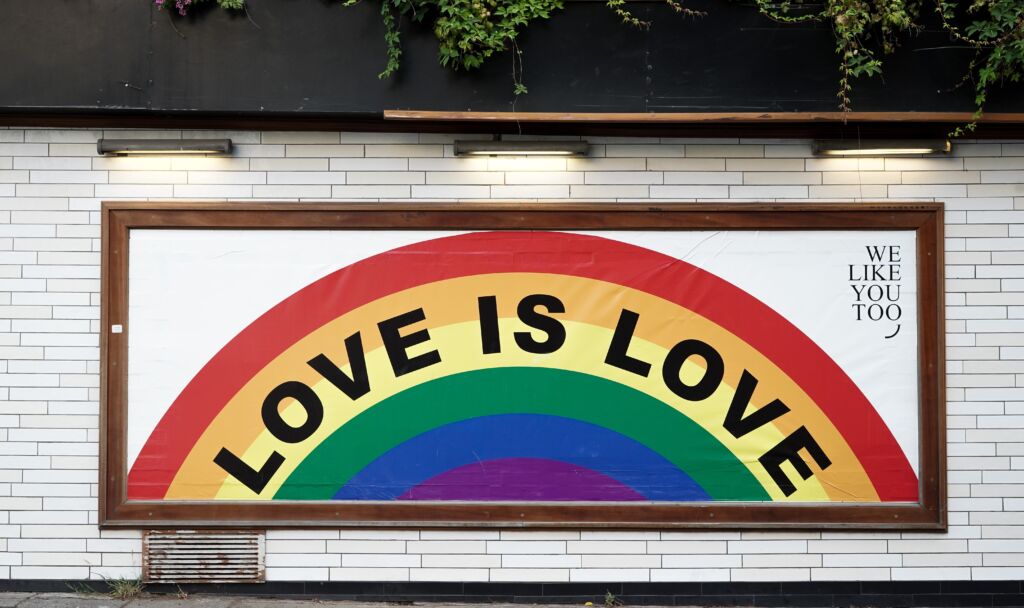
The AP Style Guide has an excellent entry on what transgender means and how to use the term in your communications. According to them, transgender “describes people whose gender does not match the one usually associated with the sex they were assigned at birth.
“The shorthand trans is acceptable on second reference and in headlines. Do not use the outdated term transsexual unless a source specifically asks to be identified as such. Avoid the word tranny, which is a slur.”
Unlike gay and lesbian, this term does not imply any specific sexual orientation. Instead, it helps describe someone’s gender identity. “Trans” comes from the Latin prefix “on a different side as.”
According to PFLAG, “This word is also used as an umbrella term to describe groups of people who transcend conventional expectations of gender identity or expression.”
What’s LGBTQ #5: Q Is for Queer and Questioning
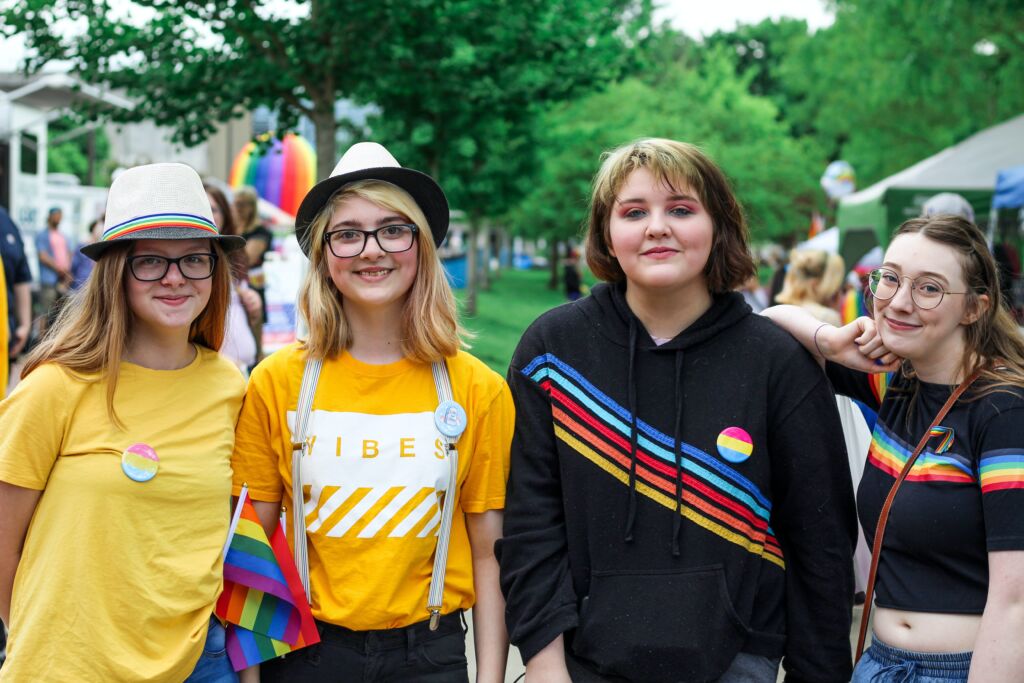
According to GLADD, queer is “an adjective used by some people, particularly younger people, whose sexual orientation is not exclusively heterosexual (e.g., queer person, queer woman).”
This term was once considered a pejorative but has been reclaimed by some in the LGBTQ community to describe themselves. However, GLADD cautions that it is not a universally accepted term. So, be mindful of how you use the word “queer” in your communications.
According to the AP Style Guide, queer “sometimes is used as a synonym for LGBTQ+. However, because of its origins as a slur, queer is not universally accepted among LGBTQ+ people, and its use tends to be more prevalent among younger generations. Use caution when it isn’t being used to describe the way an individual identifies, in the names of organizations, or in a direct quote.”
Sometimes, the “Q” in LGBTQ can also stand for questioning, especially when it comes to young people and youth events. Questioning refers to folks who are questioning their gender or sexual orientation and are exploring their identities.
But wait! When it comes to LGBTQ’s meaning, there are even more letters to explore.
What’s LGBTQ and LGBTQIA+ #6: I Is for Intersex
As the LGBTQ+ movement has grown, so has the acronym. The “I” in LGBTQIA+ stands for intersex.
According to Planned Parenthood, “Intersex is a general term used for a variety of situations in which a person is born with reproductive or sexual anatomy that doesn’t fit the boxes of ‘female’ or ‘male.’ … There are lots of ways someone can be intersex.”
What’s LGBTQ and LGBTQIA+ #7: A is for Asexual or “Ace”
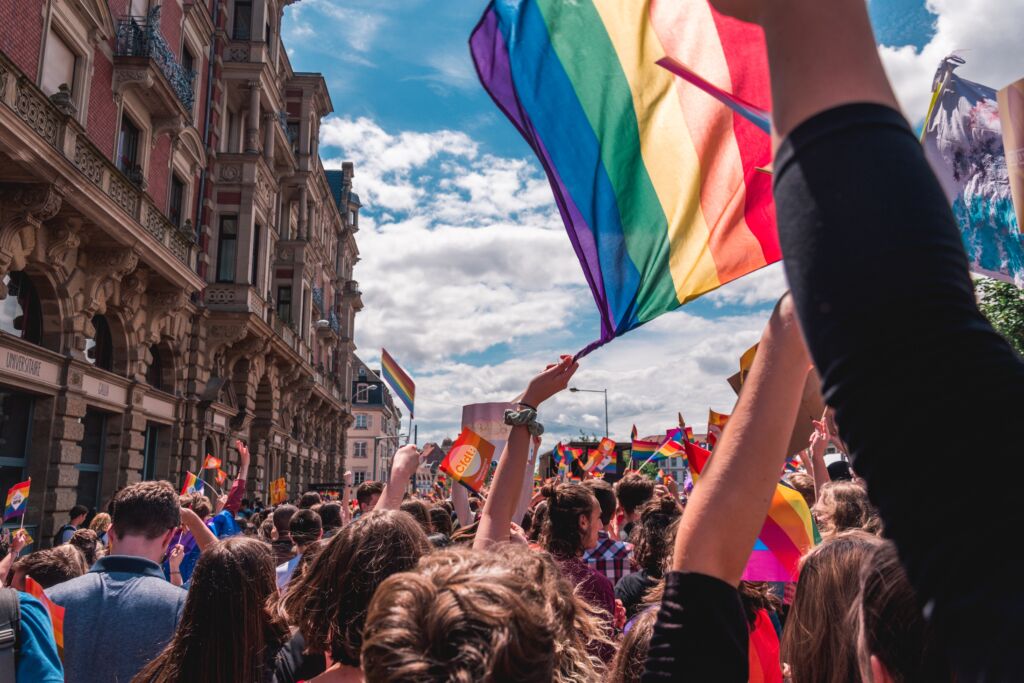
Asexuality describes a low or absent interest or desire for sexual attraction or activity.
According to the Trevor Project, “It’s important to remember that asexuality is an umbrella term and exists on a spectrum. Asexual people — also known as ‘Ace’ or ‘Aces’ — may have little interest in having sex, even though they desire emotionally intimate relationships. Within the ace community, there are many ways for people to identify.”
What’s LGBTQ and LGBTQIA+ #8: + Is for Everyone!
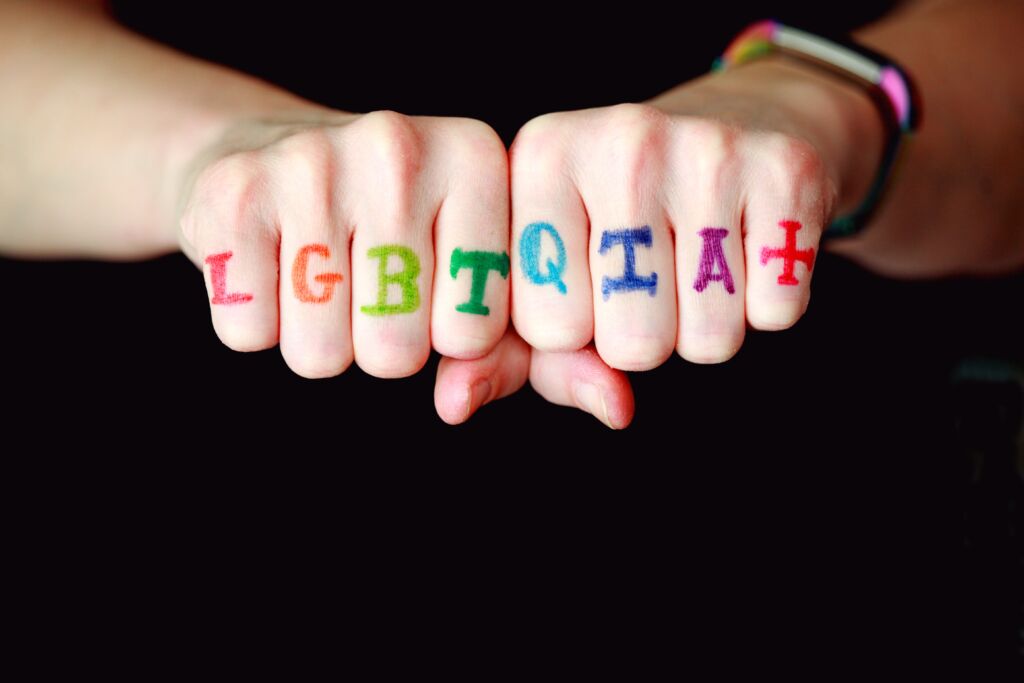
The very last letter in the acronym isn’t a letter at all but a plus sign. In the expanded LGBTQ meaning, what does this symbol stand for?
The plus sign stands for all other identities in the LGBTQIA+ community and helps include everyone who isn’t covered specifically by the first six letters.
According to Very Well Mind, there are many combinations of the LGBTQ acronym:
“Other acronym variations that are sometimes used include LGBTQIA+ (lesbian, gay, bisexual, transgender, queer, intersex, asexual, plus other identities), LGBTIQ (lesbian, gay, bisexual, transgender, intersex, and queer), and LGBTQQIP2SAA (lesbian, gay, bisexual, transgender, queer, questioning, intersex, pansexual, two-spirit [2S], androgynous, and asexual).”
Adding a plus sign to whatever variation you choose will help to include everyone in the LGBTQ+ community!
Conclusion: What’s LGBTQ and How to Support These Students
Community colleges offer three promises: quality education, comprehensive support, and an inclusive culture that serves the whole community. But when colleges don’t live up to their mission, students can feel it. Many schools say they have an inclusive culture, but in reality, they may not be hitting the mark.
According to The Hope Center for College, Community, and Justice, students from marginalized backgrounds are more likely to experience basic needs insecurity. And they add that LGBTQ+ students experience basic needs insecurity at a higher rate than other students. The center surveyed 58,000 students about their basic needs, and this is what one participant reported:
“My experience as a white, low-income, self-sufficient queer and visibly trans student will be drastically different than the average student.
“I’ve been yelled at in gendered spaces, being told I don’t belong when my college advertised being a safe space for LGBT individuals. College is very hard for me, but I choose to be here because I want to immerse myself in culture and education in hopes to make the world a better place.”
— The Hope Center Student Basic Needs Survey
There is a lot of work to do to welcome LGBTQ+ students on campus. One step to helping LGBTQIA+ students feel included is understanding the community’s basic vocabulary. Do you feel like you have a better understanding of LGBTQ’s meaning? We hope this guide was fun and informative and can help you celebrate your diverse students this Pride season and all year long.
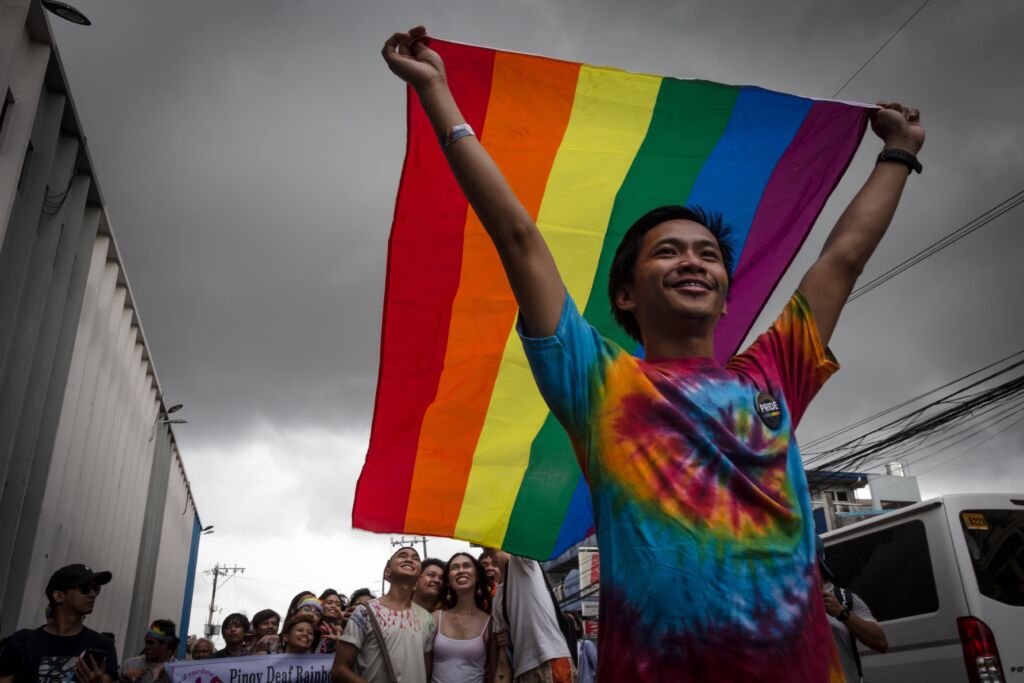
For even more great tips, check out some of our other LGBTQ+ blogs:

